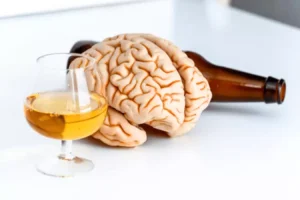
Researchers in a 2014 study examined data from close to 300 substance use disorder treatment centers, taking an in-depth look at how professionals treat SUDs. The researchers found that 36.8% of such programs used art therapy, demonstrating that it is an important option in many current treatment programs. Another aspect that may strengthen the effectiveness of art therapy https://ecosoberhouse.com/article/why-alcohol-makes-you-feel-hot-and-sweat-after-drinking/ is a phenomenon called containment. Containment allows clients to use visual representations to contain difficult thoughts and experiences that might arise during therapy. Professionals have used art therapy to help clients with a wide range of conditions, including emotional, physical, and psychological problems as well as with various diseases and disorders.
Fun Art Therapy Ideas and Activities for Children and Teens (+PDFs)
Art making can help make some of the abstract ideas addressed in the 12 Steps, such as denial, acceptance, and faith, more tangible. Art therapy can also help with the common co-occurring mental health disorders that people struggling with addiction face such as depression and PTSD. The goal of art therapy for addiction is to find an alternative form of communication that allows those in addiction recovery from substance abuse to express their experiences. Treatment providers have used art therapy in addiction treatment since the 1950s. In fact, this form of therapy is currently used in 36.8 percent of addiction treatment programs.

The Sober Stoic: Time – Life is Not Short
Negative, judgmental thoughts can cloud the mind, creating a harsh environment in an individual’s head and hindering recovery. Creating a collage of “words to live by” helps these individuals identify who they are and understand the core values they want to live by. A “words to live by” collage can be created individually or in a group setting. Art therapy usually involves techniques such as drawing, painting, sculpting, collaging, and other types of crafts that help create more inner self-awareness, understanding, and harmony. If your region currently recognizes art therapy as a viable counseling option, then it likely has a local art therapy association with a directory of licensed professionals local to you. Art therapists tend to focus their work with either adults or children and can work in a range of settings, including hospitals, care facilities, and schools.
Art Projects to Try
Expressive Arts for Healing, often referred to as Art Therapy, harnesses the transformative power of artistic expression. In a world where the pace of life often seems to accelerate, and the demands on our mental and emotional well-being can feel art therapy ideas for adults in recovery overwhelming. If you choose to participate with a good attitude and open mind, you’ll get something out of it. For a recent project, participants created greeting cards to represent a non-material gift they would like to give themselves.

- This holistic treatment approach also appears in many addiction treatment programs.
- However, art therapy alone isn’t enough to treat drug and alcohol addiction.
- It’s known to be therapeutic and supportive in developing self-awareness and exploring emotions.
- Art therapy with a licensed art therapist is not only reserved for those with artistic inclinations.
Art therapy for anxiety can be counterproductive in clients who are anxious about creating art. By creating a poem from a pool of words collected from sources like magazines, newspapers, and old books, you can create an un-self-conscious poem that molds pre-existing words to your feelings. This activity was created for people who struggle with eating disorders or have body image problems. People with these conditions often create masks to hide behind that can operate as distractions from other issues, keep others from seeing their suffering, or keep them from seeing their own dysfunction.
There are many do-it-yourself coloring apps and coloring books for adults and children that promote coloring as a form of self-care or mindfulness. While these activities can certainly be helpful for many, unless a licensed art therapist has designed them, they cannot be considered art therapy. We learned that we like to keep our hands busy and our creative minds stimulated. In this article, art therapists Gioia Chilton and Rebecca Wilkinson describe how they use mask making while working with people in addiction recovery.

